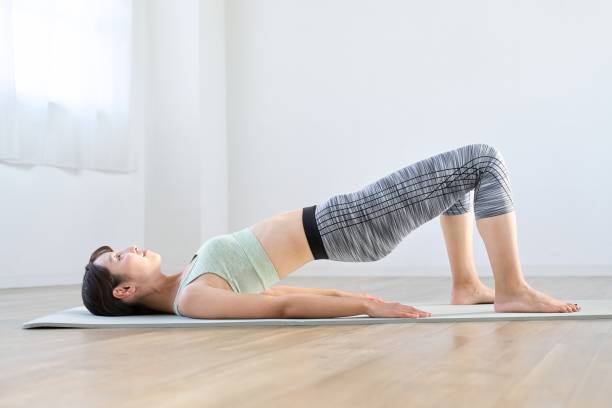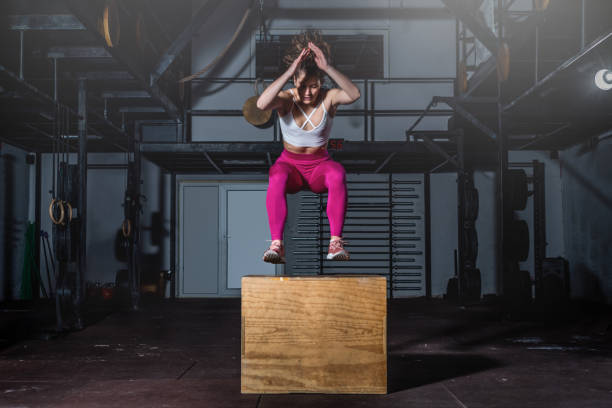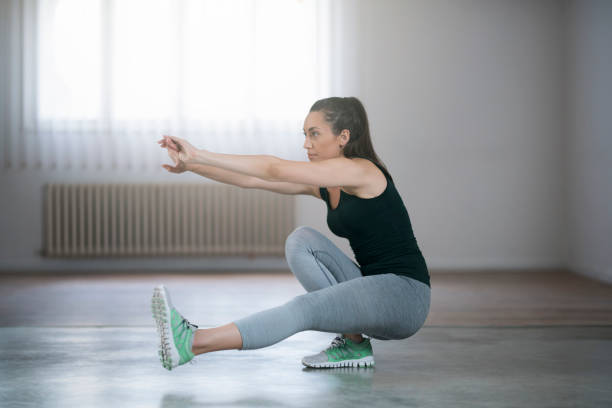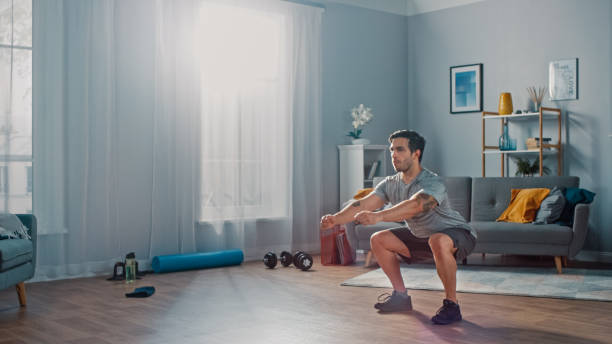Best 18 Calisthenics Leg Exercises | Calisthenics Leg Workout
Top Bodyweight Workout Routine: 18 Exercises & Best Calisthenics Leg Workouts
Calisthenics exercises utilize your own bodyweight to build strength and muscle. With creative programming and exercise progressions, you can develop incredibly strong, muscular legs using calisthenics alone.
This guide will provide the 18 best calisthenics leg exercises, example workout routines, and tips to maximize your gains.
Benefits of Calisthenics Leg Training
Here are some of the major perks of incorporating calisthenics into your leg day:
- Convenience to start position from anywhere. - No equipment needed for these body weight exercises. You can train your legs anywhere at any time.
- Functional strength - Bodyweight training improves balance, mobility, athletic performance.
- Muscle growth - When programmed correctly, calisthenics can build significant lower body mass.
- Metabolic conditioning - Constantly moving your bodyweight taxes energy systems and burns fat.
While weights may allow for heavier progressive loading, with creativity and commitment, calisthenics will transform the look and performance of your legs.
18 Best Calisthenics Leg Exercises
Here are the top 18 leg exercises to include in your calisthenics programming:
1. Bodyweight Squats
Stand with feet shoulder-width apart, send hips back and down, allowing knees to track over toes. Descend until thighs are parallel to floor. Keep chest lifted, core braced. Drive through heels to return to start.
2. Walking Lunges
Stand tall, step forward with one foot, lowering until both knees are bent 90 degrees. Descend straight down, do not lean torso forward. Drive through front heel back to standing. Repeat with opposite leg.
3. Bulgarian Split Squats
Elevate one foot behind on bench. Descend until front thigh is parallel to floor, keeping torso upright. Drive through front heel to return to start. Repeat on both legs.
4. Glute Bridges
Lie face up with knees bent and arms at your sides. Push through heels, drive hips up until body forms straight line from shoulders to knees. Squeeze glutes at top, then lower back down.
5. Calf Raises
Stand with balls of feet on step edge, heels hanging off. Raise up onto toes as high as possible, flexing calves. Hold briefly then lower heels below parallel.
6. Step Ups
Place front foot fully on box/step. Push through heel of front foot to step up, bringing back leg to meet. Step back down under control. Repeat on both sides.
7. Cossack Squats
Feet wide apart, turn one foot outwards. Push hips back, bend sideways over straight leg, descend until almost touching floor. Keep torso upright. Drive through heel back to start.
8. Jump Squats
Lower into a squat, explode up with arms driving overhead. Land softly under control, reset and repeat. Use minimal ground contact time.
9. Skater Squats
Balance on one leg, bend supporting knee, sit hips back. Touch floor lightly with opposite leg behind for balance. Drive through heel back to start. Repeat on both legs.
10. Pistol Squats
Standing on one leg, raise other leg forward, arms out. Maintaining tension, descend until hip almost touches floor. Keep chest/standing leg vertical. Return to start.
11. Nordic Curls
Kneel on floor, partner anchors feet. Keeping legs straight and torso upright, slowly lower body until you can no longer resist gravity. Use hamstrings to return to start.
12. Single-Leg Deadlifts
Balance on one leg, bend supporting knee slightly as needed. Hinge at hip, send opposite leg and torso forward. Descend until parallel to floor. Squeeze glutes and return to start.
13. Shrimp Squats
Lower into a one-leg squat, extend other leg out in front, hovering off floor. Descend until hip crease drops below knee of working leg. Keep torso upright. Drive through heel to return up.
14. Side Hip Abductions
Lay sideways on the floor. Raise leg up as high as possible. Control return by squeezing abductors and glute medius.
15. Hill Sprints
Sprint uphill powerfully, driving knees high, maintaining form. Use arms. Descend under control, jog back to start. Repeat for specified repetitions.
16. Curtsy Lunge
Start by standing straight, feet shoulder-width apart. Move your right leg behind you and to the left, as if performing a curtsy. Bend both knees to lower your body, keeping your chest upright and your hips square. Your left thigh should be parallel to the floor, and your right knee should almost touch the ground. Press through your left heel to return to the starting position. Reset and repeat for the desired number of reps before switching legs.
17. Box Jumps
Stand facing box/platform, bend knees and swing arms, then explosively jump up onto box, landing softly under control with both feet. Step down, repeat.
18. Single-Leg Box Jumps
Perform box jump only driving with one leg, keeping other leg raised behind you. Switch legs between reps. Focus on soft landings.
Example Calisthenics Leg Workouts
There are endless ways to organize the above body weight exercises into leg sculpting calisthenics routines for beginners. Here are two sample workouts:
Workout 1
- Box Jumps - 4 sets x 5 reps per set focusing on the range of motion.
- Beginner Bodyweight Squats - 3 sets x 20 reps per set.
- Walking Lunges for beginners - 3 sets x 10 reps (each leg) to develop ankle stability.
- Glute Bridges - 3 sets x 15 reps
- Calf Raises - 3 sets to failure
Workout 2
- Jump Squats - 5 sets x 8 reps
- Bulgarian Split Squats for beginners - 4 sets x 10 reps (each leg), focusing on range of motion and starting position.
- Cossack Squats targeting ankle stability - 3 sets x 12 reps (each leg) at a specific range of motion.
- Step Ups - 3 sets x 15 reps (each leg)
- Skater Squats with a focus on lower back stability - 3 sets to failure (each leg).
Mix up your sessions by including different upper body and lower body exercises, rep schemes, tempo variations, rest periods, and more to continually shock your muscles for maximum gains.

Tips for Progression
Here are some beginner tips to progress your calisthenic leg training over time:
- Always train close to failure for optimal leg muscle growth, by modulating reps based on your rate of perceived exertion (RPE).
- Prioritize good form over adding reps. Master bodyweight squats before pistol squats.
- Use plyometrics like box jumps to build explosive power.
- Increase time under tension for your leg muscles with techniques like tempo training and isometric holds.
- Improve balance/stability in your lower back and upper body by performing exercises one leg at a time.
- Visualize added resistance when lifting your bodyweight for greater intensity.
Conclusion
While calisthenics leg training has limitations for progressive overload compared to weights, with dedication to the key exercises, intelligent programming, and continual progression, you can build impressively strong and muscular legs training under your own bodyweight alone.
Give the sample beginner calisthenics leg workouts a shot, focus on good form, train with intensity, and watch your leg muscles transform week after week!

Frequently Asked Questions on Calisthenics Leg Training
How can I build muscle and strength in my legs with calisthenics?
You can build impressive leg muscle and strength using calisthenics exercises that utilize your own bodyweight as resistance. Focus on multi-joint movements like squats paired with targeted isolation exercises like calf raises. Progressively overload over time by adding reps, increasing time under tension, and advancing to more difficult single leg and plyometric variations.
What are some good calisthenics leg exercises for beginners?
Some great beginner leg calisthenics include bodyweight squats, walking lunges, glute bridges, calf raises, and step ups. Master proper form with easier progressions before tackling pistol squats, skater squats and other more advanced moves.
How many reps should I perform for calisthenics leg workouts?
Aim for a challenging rep range that brings you close to muscular failure by your final sets. A general recommendation is 8-20 reps per set for calisthenics leg training. Cycle through different rep schemes over time to continually shock your muscles.
How often should I train legs with a calisthenics workout routine?
For optimal strength and hypertrophy, aim to train legs at least 2x per week with at least 48 hours of rest between sessions. This allows enough recovery so you can train with high intensity again.
What exercises can help me build my quads?
Calisthenics exercises that strongly target your quadriceps include: squats, lunges, step-ups, pistol squats, jump squats, box jumps. Focus on proper form, depth, and progression for continual quad development.
How can I improve my leg endurance with calisthenics?
Use moderate rep ranges (15-30 reps per set) focusing on little rest between sets. Additionally, cycle between multi-joint and isolation exercises to fatigue all lower body muscle groups.
How should I structure my calisthenics leg workout plan?
Structure your workout with compound moves first then isolation exercises. Squats, lunges, step ups should come before calf raises. Progress from larger muscle groups to smaller for best performance. Mix up exercises, order and rep schemes each session.
What are some advanced calisthenics leg exercises?
Some advanced moves include pistol squats, Nordic curls, skater squats, single leg deadlifts and plyometrics like box jumps. Work your way up gradually by mastering easier progressions first before attempting advanced exercises.
How can I train my legs effectively using calisthenics with minimal equipment?
The best part of calisthenics is requiring little to no equipment. You can build strong legs solely using bodyweight movements. Utilize progressions by elevating your feet or using a bench to open up more exercise variations.
What muscles do basic bodyweight squats work out?
Bodyweight squats are a compound exercise working several lower body muscle groups including your quads, hamstrings, glutes and calves. They also require core stability and balance, engaging your abs and back.
Will calisthenics leg workouts help strengthen my thighs?
Yes, calisthenics can build extremely strong thighs and leg muscles! Squats, in particular, develop impressive quad, hamstring and glutes strength with proper progressive overload over time.
How often should I train calves with calisthenics?
Aim to incorporate calf training 2-3x per week either through dedicated calf exercises like raises or by integrating calf intensive movements such as plyometrics into leg sessions. High rep ranges are ideal for calve development.
What are some tips for maximizing leg development through calisthenics?
Some tips include always training close to failure with sufficient intensity, progressively overloading by advancing exercises over time, incorporating plyometrics for power, emphasizing eccentric training, and continuing to challenge your muscles with new rep schemes and workout structures.

Expert Tips for Building Strong Legs with Calisthenics
How to Develop Muscular Legs Using Only Bodyweight
To build impressive leg muscle using minimal equipment, focus on progressive overload through hard-hitting multi-joint movements like squats and lunges before moving to targeted isolation work.
Continually push intensity with techniques like tempo training, unilateral exercises, and plyometrics. Adding elastic resistance bands can mimic weight training stimulus. With dedication to proper programming and progression, calisthenics will transform the size and performance of your lower body.
Strategies for Strengthening Legs with Calisthenics Exercises
The key is exercise rotation and variation. Never let your muscles adapt by altering reps, tempo, rest periods, and order. Prioritize large compound lifts before smaller isolation moves.
Maintain maximal effort, continually tweaking volume to match your recovery. Don't neglect eccentrics - emphasize lowering under tension to maximize muscle damage.
Applying this periodization framework to core lifts like squats, lunges, and glute bridges will build incredible lower body strength.
Tips from a Pro Calisthenics Athlete for Developing Leg Muscles
Drawing from my decade of calisthenics training, the number one strategy for increasing leg size is to always keep tension on your muscles. Use techniques like partials and holds mid-range to force constant load.
As you master traditional movements, transition to advanced variations like shrimp squats, Nordic curls, and plyometrics. Isolation exercises like calf raises, though less taxing, play an important role in muscular definition.
Work all angles - train unilaterally, change foot placement, elevate your heels. The key is forcing your body to adapt.

How Calisthenics Leg Workouts Can Enhance Muscle Growth
Calisthenics leg training, when programmed correctly, can stimulate impressive muscular growth through mechanical tension and muscle damage. S
trategies like eccentric emphasis, blood flow restriction training, and extreme ranges of motion apply high amounts of stress.
Furthermore progressing single leg exercises enhances stability demands producing greater microtrauma and activation. Engineered hypertrophy programs integrate calisthenics creativity with proven weight lifting theory for lower body growth.
Why Calisthenics Is Ideal for Developing Lower Body Power
Plyometric exercises allow immense velocity generation, explosive strength, and fast-twitch muscle recruitment essential for athletic performance.
The adaptable resistance of bodyweight movements empowers safer progression into advanced leaping, bounding, and jump training variations not possible under fixed external loads.
When combined with traditional lifts in a carefully periodized regimen, plyometrics magnify the muscle and power-building potential of calisthenics leg training.

How I Structure Calisthenics Leg Workouts for Serious Gains
I design my calisthenics leg routines around biomechanical breakdowns of multi-joint movements to ensure every major muscle receives direct tension.
I categorize lift variations by squat depth, step length, heel elevation to manipulate targeted regions. Each microcycle focuses on a different movement pattern for structural balance - squat versus hip hinge emphasis.
I meticulously vary volume based on adaptive signals - utilizing exertion metrics like RPE and velocity rather than prescribed reps.
Following these core training principles, I’ve built formidable lower body physiques with no equipment required.
For More Training Advice + Diet and Lifestyle visit us RIPL Fitness
PS: Make sure you check out the rest of our Legs Training Guides:
Leg Press Machine Exercise | Ultimate Leg Press Workout Guide
The Best Leg Strengthening Exercises for Seniors
8 Best Landmine Exercises | Landmine Leg & Lower Body Workout
Easy Wall Exercises For Legs | Wall Workout
8 Best Hack Squat Alternatives That Target Your Quads
10 Single Leg Exercises to Build Explosive Leg Strength
Best 10 TRX Leg Exercises For Lower Body | TRX Leg Workout
12 Best Kettlebell Leg Exercises | Leg Workout
9 Compound Leg Exercises | Best Compound Exercises For Lower Body

